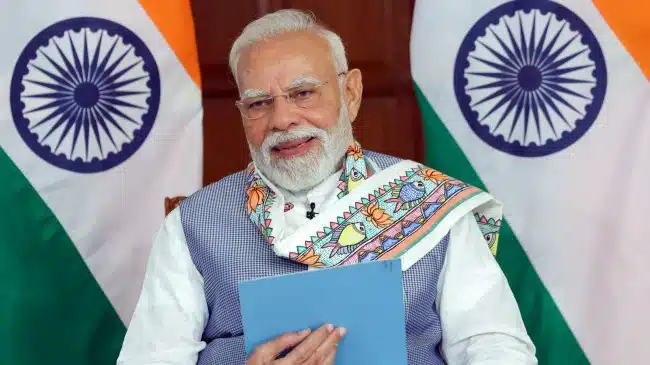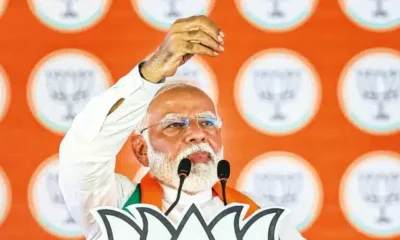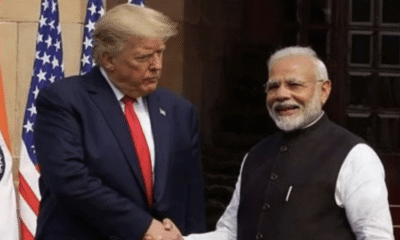
|
Getting your Trinity Audio player ready...
|
(The article was originally published in Indian Express on October 25, 2025 as a part of Dr Madhav’s column titled ‘Ram Rajya’. Views expressed are personal.)
The 20th East Asia Summit – EAS – is taking place on 26-27 October at Kuala Lumpur in Malaysia. This annual gathering of leaders from 18 countries from Asia and beyond was an initiative taken by the ASEAN leadership in 2005 in an effort to broad-base deliberations on regional stability and security. Several important leaders, including US President Donald Trump, Australian Prime Minister Anthony Albanese and the newly elected Prime Minister of Japan, Sanae Takaichi, will be attending this year’s summit. Chinese President Xi Jinping and Russian President Vladimir Putin will not be attending the summit, while their countries will be represented by premier Li Qiang and deputy prime minister Alexander Novak respectively. Prime Minister Narendra Modi will be addressing virtually.
India’s engagement with the ASEAN began in 1992 and the relations grew steadily since then. In 1995, India became a dialogue partner of ASEAN and joined the ASEAN Regional Forum in 1997. India and ASEAN established bilateral engagement in 2002 with the first ever ASEAN-India Summit taking place that year at Phnom Penh in Cambodia. Since then, the two met annually on the side-lines of the ASEAN summits.
Marking the decennial of summit-level partnership and 20 years of sectorial partnership, the ASEAN-India Commemorative Summit was held in Delhi in December 2012, where the relationship was upgraded to a “strategic partnership”. Interestingly, 2012 also marked two decades of India’s Act East Policy, first pronounced by Prime Minister P V Narasimha Rao in early 1990s. Although the partnership with ASEAN progressed since then, it never acquired required momentum. India largely remained Westward bound in its economic and strategic ties. Making an interesting comment at an address in Chennai in July 2011, Hillary Clinton, visiting US Secretary of State, called upon India “not just to look East, but to engage East and act East”. That perhaps prompted Indian leadership to upgrade ties to a strategic level. Several commemorative events like the ASEAN-India car rally and the naval expedition by INS Sudarshini to ASEAN countries marked that new relationship.
But the real impetus came after Modi became the prime minister in 2014. Look East was transformed into Act East and the geopolitical, trade and developmental ties with individual member nations of ASEAN too got new vigour. Incidentally, Modi is the only world leader to have attended nine out of the nineteen East Asia Summits held in the last two decades. As the decade of 2010s saw rising tensions in the Indo-Pacific region between the big powers – US and China – Modi understood the key role that ASEAN could play along with India to ensure peace and stability in the waters around. As the leader of the lone Indian Ocean power in the QUAD, Modi emphasised that the group should strive not only for a “Free and Open Indo-Pacific” (FOIP), but a free, open and “inclusive” Indo-Pacific (FOIIP). Underscoring the importance of ASEAN to India’s vision for that “inclusive” Indo-Pacific region, he emphasised in his important address at the Shangri La Dialogue in Singapore in 2018 that “ASEAN has been and will be central to its future”. Modi was instrumental in making ASEAN centrality a vital ingredient of stability and peace in the Indo-Pacific.
Modi’s consistent efforts at strengthening India’s relations with ASEAN reflected in the year-long celebrations of the 25 years of dialogue partnership in 2017 and upgrading of ASEAN-India ties to a “Comprehensive Strategic Partnership” in 2022. Attendance of leaders of all the ten ASEAN countries at the Republic Day parade in Delhi in January 2018 marked the high point of that new spirit and energy in the ASEAN-India relationship.
It is in this background that the ASEAN leadership was eagerly looking forward to Modi’s participation in this year’s summit at Kuala Lumpur. Malaysia, as the current chair of ASEAN, is the host of the summit this year. Anwar Ibrahim, Prime Minister of Malaysia and undoubtedly the most statesmanlike leader in the region after Lee Kuan Yew, enjoys a great personal bond with Modi. After becoming prime minister in 2022, he paid his first South Asia visit to India in August 2024 and held extensive consultations with Modi, which helped restore stability in the bilateral relationship after a brief period of tumult.
At a conference attended by delegates from ASEAN and India in Kuala Lumpur last week, I saw enormous enthusiasm over the visit of the Indian prime minister. Minister Liew Chin Tong, a close aide of PM Anwar, spoke at length about expectations from India and made a light-hearted, yet profound comment, saying, “Moving from the world of globalisation being presented as McDonald’s plus Coca Cola, I hope we will see more à la carte choices, with diverse options like Dhal, Chilli, and Curry, rather than a world dominated by a single monolith. Mind you, a world of just McDonald’s and Dim Sum is no good either”.
Unfortunately, domestic commitments are holding back Modi from attending the summit in person this year. But India needs to appreciate the growing urge in the ASEAN for enhanced ties, given not only the historic bonds of relationship but also the evolving unstable multipolar world scenario. China has wider presence in the region. But it also has wider maritime disputes with several ASEAN nations including Indonesia, Malaysia, Vietnam and the Philippines. President Trump will be attending the summit friendless in Asia. Unlike during Trump 1.0 when he enjoyed good ties with Prime Minister Shinzo Abe of Japan and Narendra Modi, his second term began on a coarse note with almost all the important Asian nations. Leadership of ASEAN too is wary of ties with the US.
In the new world taking shape, multilateralism will be guided by regional and minilateral groupings. India is the most influential power in the Indo-Pacific Region after the big two. ASEAN is the linchpin to regional stability and security. Together they have a greater role to play in realising the dream Modi articulated in Singapore in 2018: “Asia of rivalry will hold us all back. Asia of cooperation will shape this century”.




